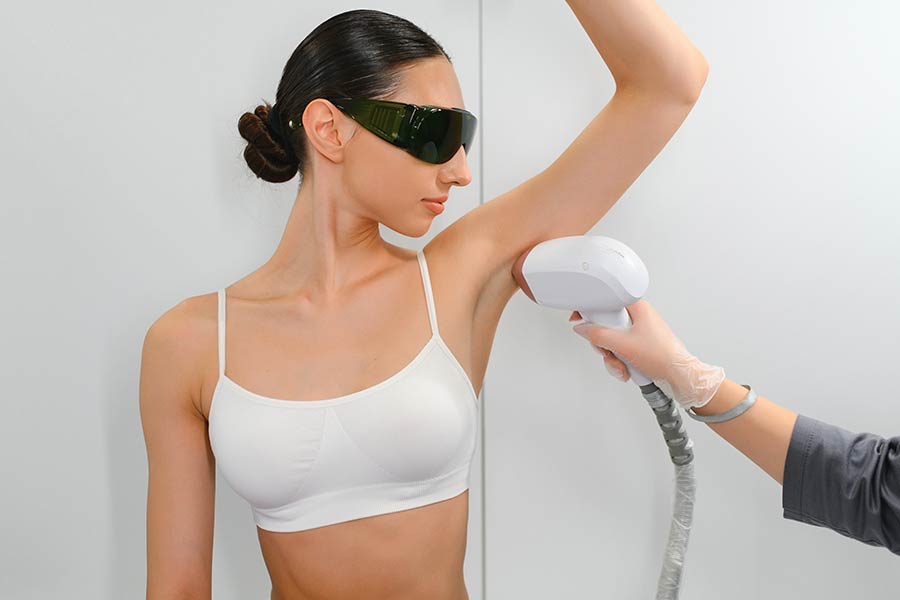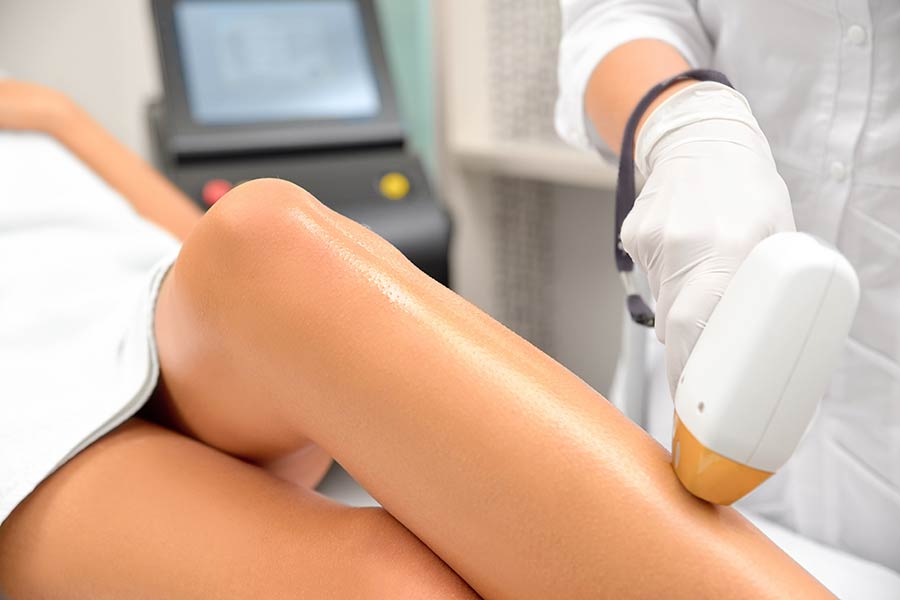Did you know that over a million people choose dermal fillers each year to enhance their facial features? Among these, using dermal fillers in the nose has surged in popularity, offering a non-surgical solution to reshape and refine the nose's appearance. This quick and minimally invasive option can correct imperfections, balance facial proportions, and boost confidence without the downtime of traditional rhinoplasty. Whether it’s smoothing out bumps, refining the nasal tip, or improving symmetry, dermal fillers provide immediate results. Dive into how this innovative approach can offer you a tailored solution to achieve your desired nose shape with minimal fuss.
Key Takeaways
- Dermal fillers offer a non-surgical option for nose reshaping, providing a less invasive alternative to traditional rhinoplasty.
- The benefits include minimal downtime, immediate results, and the ability to adjust or reverse the procedure if desired.
- When comparing non-surgical and surgical nose jobs, consider factors like permanence, recovery time, and cost to make an informed decision.
- Proper preparation for your dermal filler procedure can enhance outcomes and reduce the risk of complications. Follow your clinician's advice closely.
- Understanding the procedure and aftercare is crucial for a smooth recovery and optimal results. Adhering to aftercare instructions minimizes risks and aids in the healing process.
- Long-term expectations should be realistic; while dermal fillers can offer significant improvements, they are temporary and will require maintenance treatments.
Understanding Dermal Fillers
Overview
Dermal fillers are gel-like substances injected beneath the skin. They play a crucial role in non-surgical nose reshaping, offering a less invasive alternative to traditional rhinoplasty. The use of dermal fillers for cosmetic enhancements has seen a significant rise, thanks to their ability to offer immediate results with minimal downtime.
Choosing fillers for nose contouring comes with several benefits. Unlike surgery, there's no need for general anesthesia or long recovery periods. Patients appreciate the flexibility and reversibility of filler treatments, making them a popular choice for those hesitant about permanent changes.
Types and Uses
The market offers various types of dermal fillers, including hyaluronic acid and calcium hydroxylapatite. Each type serves different purposes based on their composition and consistency. For instance, hyaluronic acid fillers are renowned for their hydrating properties and versatility in addressing volume loss and smoothing lines.
Certain fillers stand out for nose contouring due to their viscosity and longevity. Hyaluronic acid fillers, in particular, are favored for their ability to sculpt and shape the nasal profile with precision. The right type of filler can significantly impact the outcome, emphasizing the importance of professional guidance to meet individual needs and desired results.
Nose Contouring Process
The process begins with a consultation where the practitioner assesses the patient's facial structure and discusses desired outcomes. Next, the chosen filler is carefully injected into specific areas of the nose to achieve the intended look. This step requires skillful precision to ensure natural-looking results.
Patients value the non-invasive nature of this procedure, which typically involves little to no downtime. Moreover, customization options allow individuals to achieve tailored results that enhance their natural beauty without appearing overdone.
Benefits of Non-Surgical Rhinoplasty
Immediate Results
One of the most appealing aspects of choosing dermal fillers for nose reshaping is the immediate visibility of results. Unlike surgical options, which require weeks or even months for swelling to subside and reveal the final shape, non-surgical rhinoplasty offers instant gratification. Patients walk out of the clinic seeing their desired changes right away.
Moreover, the lack of downtime is a significant advantage. People can return to their daily activities almost immediately, without the need for a lengthy recovery period. This convenience makes it an attractive option for those with busy lifestyles.
In some cases, if the initial result isn't exactly as desired, adjustments are possible on the spot. This ability to fine-tune ensures that patients leave completely satisfied with their appearance.
Natural Look
Achieving a natural-looking enhancement is paramount in cosmetic procedures. When administered by a skilled provider, dermal fillers in the nose can subtly improve its shape and size without giving away that any work has been done. This subtlety is crucial for patient satisfaction, as most people seek improvements that blend seamlessly with their natural features.
The importance of selecting an experienced practitioner cannot be overstated. Their expertise ensures that enhancements enhance rather than alter one's appearance drastically. Patients often express high levels of satisfaction with the natural feel and look of their enhanced noses, attributing this success to the skill of their provider.
Cost-Effectiveness
Comparatively, non-surgical rhinoplasty using dermal fillers is more affordable than traditional surgery. The lower cost does not compromise quality but provides a financially accessible option for those seeking nasal enhancement. This affordability opens up possibilities for a wider audience who might have thought nasal reshaping was out of their financial reach.
Considering that fillers are not permanent and may require future touch-ups, it's important to consider long-term costs as well. However, many find these ongoing expenses manageable and worthwhile for maintaining their desired look over time.
Clinics often offer payment plans or packages for multiple sessions, further easing the financial burden on patients. These options make it easier to plan and budget for maintenance treatments, ensuring results remain consistent.
Comparing Non-Surgical and Surgical Options
Pros of Fillers
Fillers offer a quick recovery. Most people return to their daily activities right away. They carry a lower risk of complications than surgery does. This makes them a safer choice for many. Some fillers are reversible, too. If you don't like the results, a doctor can undo them.
Cons of Fillers
However, fillers don't last forever. You'll need more treatments to keep the look. There's also a small chance of allergic reactions or not liking how it looks. It's important to have realistic expectations before getting fillers.
Advantages of Surgery
Surgery gives results that last forever. It can make big changes to the nose's shape that fillers can't do. Over time, surgery might be cheaper than many filler treatments.
Drawbacks of Surgery
But surgery has its downsides. Recovery takes much longer, and there are more risks involved. Once done, you can't reverse the changes easily. Also, it costs more upfront than fillers.
Preparing for Your Procedure
Choosing a Provider
Selecting the right practitioner is crucial for achieving desired results with nose fillers. Look for someone with qualifications and extensive experience in dermal fillers, specifically in the nasal area. Before making a decision, research their before-and-after photos to gauge their skill level.
It's also wise to read reviews from previous patients. This can provide insights into their satisfaction levels and the provider's approach to patient care. Consulting with multiple providers allows you to compare expertise, demeanor, and cost, helping you find the best fit for your needs.
Consultation Questions
When meeting with potential providers, prepare a list of questions. It's important to ask about their experience specifically with nose fillers. Knowing how often they perform this procedure can give you confidence in their ability.
Inquire about the types of fillers they use and how long the results typically last. Each filler has its pros and cons, and understanding these can help set realistic expectations. Also, ask about what to expect during the procedure and the recovery process. This includes any potential side effects or downtime needed after the treatment.
Pre-Procedure Steps
Before undergoing a nose filler procedure, there are several preparations you should make. Avoid certain medications that can increase bruising or bleeding risk, such as aspirin or ibuprofen, for at least a week beforehand.
Having a clear idea of what you hope to achieve is essential. Discuss your desired outcome thoroughly with your provider during the consultation. They can offer guidance on what is realistically achievable with fillers.
A comprehensive consultation is key to ensuring both you and your provider are aligned on your goals. This step cannot be overstressed as it lays the foundation for a successful procedure.
The Procedure Explained
Process Steps
The journey to enhancing your nose with dermal fillers begins with a few critical steps. First, the treatment area is carefully cleaned and marked. This guides where the fillers will be injected. Numbing cream or local anesthesia is applied to ensure comfort during the procedure.
Next, the filler is precisely injected into predetermined spots on the nose. The whole process usually takes less than an hour, making it a quick option for those seeking cosmetic improvements without major surgery.
After injecting the filler, providers may gently massage the area or make slight adjustments. This ensures the filler spreads evenly and achieves the desired shape.
Duration and Comfort
One of the most appealing aspects of nose fillers is their speed and minimal discomfort. Most treatments are completed in under 30 minutes, allowing patients to fit this cosmetic enhancement into even the busiest schedules.
To minimize any pain, topical anesthetics are applied before the procedure starts. These creams numb the skin effectively, making the injections more comfortable. Patients often report feeling only a mild pressure or pinching sensation during filler placement.
Another significant benefit is that there's no downtime required after getting nose fillers. Most people can return to their daily activities immediately, with no need for a lengthy recovery period.
Aftercare and Recovery
Post-Procedure Care
After getting dermal fillers in your nose, it's vital to take the right steps. Avoid strenuous activities for the first 24 to 48 hours. This helps reduce swelling and prevents the filler from shifting.
It's also wise to steer clear of makeup or putting any pressure on your nose. Even a gentle touch can affect the filler's placement and healing. If you notice minor swelling or bruising, don't worry. These are common reactions. Applying a cold compress can help manage these symptoms effectively.
Healing Time
Dermal fillers offer the benefit of minimal downtime. You might see some swelling, but it usually goes away within a few days. For the fillers to settle perfectly into shape, give them 1 to 2 weeks.
etimes, you might need a follow-up visit. Your doctor can make small adjustments if necessary during this visit. This ensures your nose looks just as you hoped.
Side Effects and Risks
With any procedure, knowing potential side effects is crucial. Common ones include swelling, bruising, and redness at the injection site. These typically resolve quickly.
However, there are rarer risks like vascular occlusion, where blood flow gets blocked. This serious issue underscores why choosing an experienced provider is crucial. A skilled professional knows how to minimize risks and ensure safe treatment.
What to Expect Long-Term
Results Duration
Nose fillers can transform your look with immediate results. But how long do these effects last? On average, the longevity of nose fillers ranges from 6 months to 2 years. This wide range is due to several factors.
First, the type of filler plays a crucial role. Some fillers are designed to be more temporary, while others aim for longer-lasting effects. Your body's metabolism also impacts how quickly the fillers break down. People with faster metabolisms might see their results fade sooner.
For those wanting to maintain their new look, touch-ups are an option. These sessions can help prolong the desired appearance by adding more filler as the original application begins to diminish.
Maintenance Tips
After enjoying the benefits of dermal fillers in the nose, keeping them looking their best is key. Regular follow-up appointments are essential. They help assess if additional fillers are needed and ensure everything looks natural.
Skincare and sun protection play significant roles in maintaining your results. Protecting your skin from the sun helps prevent premature breakdown of the filler material. A good skincare routine supports overall skin health, which can also extend the life of your fillers.
Lifestyle factors influence how long your results will last too. Staying hydrated, eating a balanced diet, and avoiding smoking can all contribute to longer-lasting filler effects.
Making Your Decision
Cost Considerations
Nose filler treatments usually range from $600 to $1,500. The exact price can vary greatly. It depends on how much filler you need and the experience level of your provider. More experienced professionals often charge more.
Remember, fillers are not a one-time cost. You might need future touch-ups to maintain your look. This should be part of your budget planning.
Lifestyle Factors
If you lead an active lifestyle, think about how it might affect your fillers. Activities that cause frequent facial movements can shorten the lifespan of your results.
People who spend a lot of time in the sun or in extreme temperatures should take extra care. These conditions can also impact how long your fillers last.
A healthy lifestyle can help enhance your results. Eating well and staying hydrated will keep your skin in good condition. This makes the effects of nose fillers look even better.
Personal Goals
It's important to know what you want from nose filler treatments. Be clear about your aesthetic goals when talking to your provider.
Having realistic expectations is key. Fillers can make big improvements, but they have limits.
Think about how nose fillers fit into your wider beauty or health goals. They should complement other aspects of your personal care routine.
Closing Thoughts
Dermal fillers in the nose offer a game-changing option for those of you looking to enhance your appearance without going under the knife. You've seen how they stack up against surgical alternatives, what the procedure involves, and what you can expect afterward. It's clear that this non-surgical route can deliver significant benefits with minimal downtime, making it an attractive choice for many. Whether it's smoothing out bumps, reshaping your nose profile, or just boosting your confidence, dermal fillers have got you covered.
Now's the time to take the next step. If you're considering this procedure, reach out to a qualified professional who can guide you through the process with expertise and care. Remember, choosing someone skilled in non-surgical rhinoplasty is crucial to achieving the results you desire. So, why wait? Start your journey towards a more confident you today.
Frequently Asked Questions
What are dermal fillers and how do they work in the nose?
Dermal fillers consist of gel-like substances injected beneath the skin to restore lost volume, smooth lines, or enhance facial contours. In the nose, they're used for non-surgical rhinoplasty, offering a less invasive option to reshape or adjust the appearance of your nose with minimal downtime.
What are the benefits of choosing non-surgical rhinoplasty over surgery?
Non-surgical rhinoplasty using dermal fillers is less invasive, has a significantly shorter recovery time, and poses fewer risks than traditional surgery. It's an excellent option for those seeking minor adjustments without the commitment and downtime of surgical procedures.
How do I prepare for a dermal filler procedure in my nose?
Preparation typically involves avoiding blood-thinning medications and supplements to reduce bruising. You should also consult with your practitioner about your medical history and any medications you're taking to ensure you're a suitable candidate for the treatment.
Can you explain what happens during the dermal filler procedure for the nose?
The procedure involves injecting a specific amount of filler into targeted areas of your nose to achieve desired results. It's relatively quick, usually completed within 30 minutes to an hour, and involves minimal discomfort thanks to topical anesthetics.
What does aftercare involve following a non-surgical nose job?
Aftercare is straightforward: avoid touching or applying pressure on the treated area for a few days, stay away from extreme temperatures, and follow any personalized advice from your practitioner to ensure optimal healing and results.
How long will the results from nasal dermal fillers last?
Results vary depending on the type of filler used but generally last between 6 to 18 months. Over time, your body naturally absorbs the filler material, so maintenance treatments may be necessary to preserve your desired outcome.
What should I consider before deciding on dermal fillers for my nose?
Consider your goals, expectations, and whether you're looking for temporary adjustments. It's crucial to choose an experienced practitioner who can accurately assess your needs and deliver safe, effective results aligned with your aesthetic vision.

















